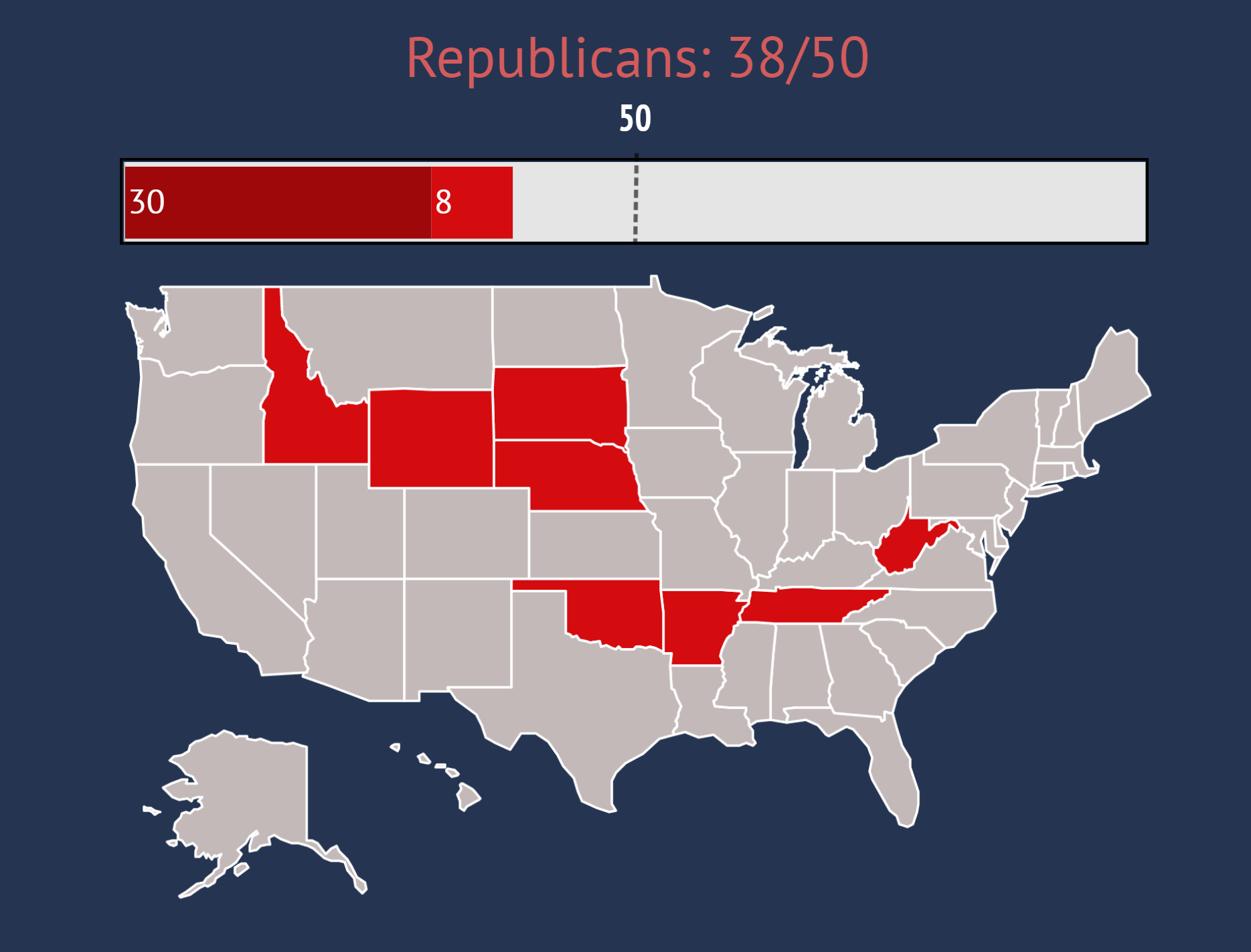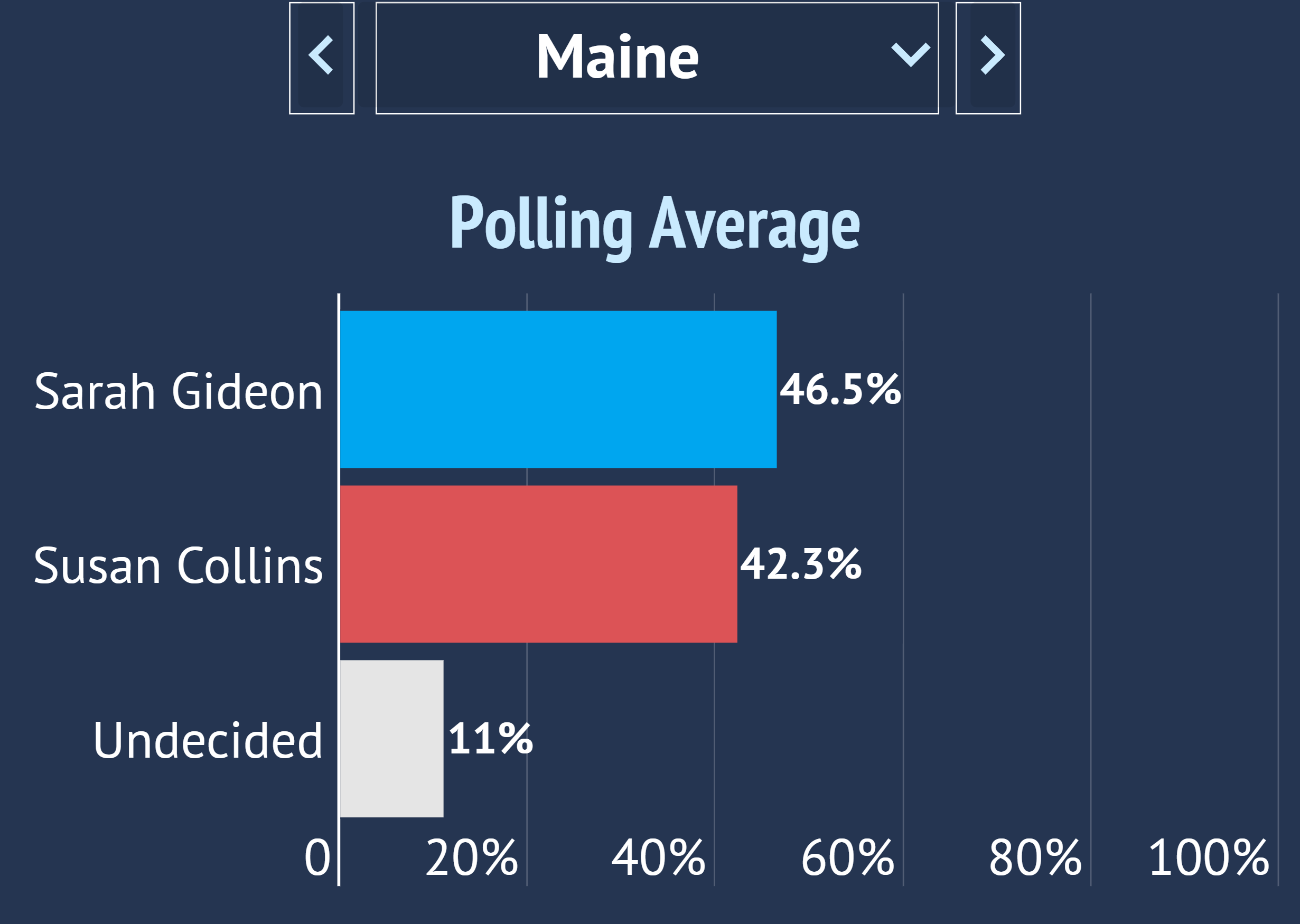The Essential Guide to how Republicans Can Defend their Majority
Photo Credit: Gage Skidmore from Peoria, AZ, United States of America / CC BY-SA (https://creativecommons.org/licenses/by-sa/2.0)
By: Logan Phillips
Date: September 8th
This is Part Three of the Six Part Definitive Guide to the 2020 Senate. Make sure you catch the next part by bookmarking racetothewh.com, or following us on Instagram, Facebook and Twitter
Schedule:
Sunday: The Big Picture - Part One
Monday: The Democratic Pathway to Victory
Tuesday: The Republican Pathway to Victory
Thursday: Where Democrats have the Edge - Part Three
Friday: The True Tossup States - Part Four
Saturday: Races with Republicans Out Front - Part Six
Pathway to Victory
While President Trump is facing longer odds for re-election, Republicans are right in the thick of the fight for the Senate. To win, they'll need to deftly defend incumbents from a fury of Democratic challengers that, armed with support from small dollar donors, have successfully put races in place even in deep red territory.
It’s going to be a lot harder for them to secure the majority then it was in 2018. Despite losing the national vote by about eight percent, Republicans were able to hold onto the Senate two years ago. They were aided significantly by one of the most Republican leaning docket of races in Senate history. This time around, the map is much more competitive, and there are more Republicans up for re-election then Democrats as a result of a successful 2014.
Safe Republican States (95%+ Chance of Winning)
Republicans essentially start with 38 seats, when we combine the thirty seats not up for reelection with the eight seats where they have a decisive edge (and a 95%+ chance of winning). That leaves them thirteen seats short of a majority, or twelve seats if they also win the White House.
For Republicans to win, it is absolutely essential that they lock down the states where they are the clear and heavy favorites. Democrats have a 7-23% chance of upsets in Alabama, Mississippi, Kentucky, Texas, and Louisiana. If they take even one of them, Republicans will be in for a very long night, and can just about kiss their majority goodbye.
The toughest of the four might be Texas. While Biden presents a real and dangerous threat to team Trump in the Lone Star state, Cornyn has followed in the footsteps of former Governor and President George W. Bush, and made a full court press attempt to win over Latino voters. It’s paid off, and he has a wide 7% lead at this point. However, this race has a Texas sized flashing warning sign - even in September, 22% of voters remain undecided here, far more than any other Senate race in the nation. If M.J. Hegar channel’s her best Beto O’Rourke imitation and starts to build some buzz, press attention, and fundraising, this one might not be as cleanly in Republicans favor as we think.
The real challenge for the G.O.P will be holding on to the seven races where Republicans have a only a 51-70% chance of winning. Making matters more challenging is that these states represent a broad coalitions of regions, demographic groups, and ideologies – so they have to succeed across the nation rather than simply overperform in one area
Senate Races
In-depth projections for every Senate Race that are data-driven and evidence based, while being fun to read and easy to understand.
Georgia and Iowa remain fiercely competitive both for the Senate and for the White House. Republicans will need to avoid poor turnout and win the persuasion game with undecided voters. Alaska, Montana, South Carolina, and Kansas all typically vote for Republican presidential candidates, but Democrats have kept the races in play because their candidates are much more well liked at least to this point, and they have raised considerably more money. The G.O.P. needs to persuade Republican leaning but independently minded voters to prioritize a Republican majority over the individual that they may not particularly love.
The most vulnerable Republican of this set is Joni Ernst in Iowa, who has made a series of seriously costly gaffes about the Coronavirus. Democrats are exploiting this area of weakness by pounding Ernst with effective attack ads highlighting her votes that helped weaken the U.S.’s capacity to manage a pandemic.
Republican Map to Victory
On a state by state basis, winning each of these races is quite feasible, with the potential exception of Iowa; collectively, it will be an extremely challenging task to pull off. Republicans cannot afford too many mistakes. The vast ground they must cover is the primary reason why Democrats are currently the favorites.
If Republicans steal a modest upset in Maine or North Carolina – both races currently moving away from them– then they can afford an additional loss or two. Their stretch target could be Minnesota. Recent polling suggests this race is getting a lot closer; Donald Trump almost won the state in 2016. If Republican’s can displace Tina Smith, then their chances of victory go up to 56%.
You might be wondering why I haven’t mentioned Arizona or Colorado. Arizona looked like the marquee matchup of the year in January, but Democrat challenger Mark Kelly has proven to be a dream recruit. He is a former astronaut who served on the International Space Station, with an inspiring story about his work advocating for safe, reasonable gun control after his wife, Congresswoman Gabby Giffords, was shot in a horrible mass-shooting and assassination attempt in Tucson. Kelly stood by her side and helped her in her years-long recovery. He has become extremely popular with Democrats, Independents, and even some Republicans; he’s one of the greatest fundraisers for a Senate challenge in American history, and he now has a dominant 11% lead in the polls.
Republicans aren’t finished here, but their chances have dwindled to 10%. Colorado isn’t much different. The state has clearly soured on Donald Trump, while Cory Gardner didn’t put enough effort into creating his own brand, independent of Trump – he’s trailing his opponent by a wide margin.
Senate Forecast
Next Up:
On Wednesday, we’ll take a look around the country at the single most important elections that will determine the nation’s future. We’ll start with the races where Democrats have taken the lead – like Arizona, where Astronaut Mark Kelly has rocketed ahead and left Republican Senator Martha McSally stranding behind in orbit.
Then, on Thursday, we’ll focus in on the states where Republicans have the advantage but where Democrats could still break through – including South Carolina, a deep red state where Jamie Harrison has astounded expectations and become a genuinely viable underdog against longtime incumbent Lindsey Graham. Finally, on Fridaywe’ll end with the most competitive races in the nation where neither side has a decisive edge – including Iowa – where Republican 2014 breakout star Joni Ernst has been unable to shake political newcomer Theresa Greenfield in a an election that will almost certainly go down to the wire.
Senate Races
While you wait for the next part, you can check out our extensive breakdown of every Senate Race. We have in-depth, scientific and data driven projections that are nonetheless easy to understand and fun to look at. They tell you who we think is going to win and how we came up with our projection - and then shows you everything you need to know to make your own conclusions about the race. That includes polling, how popular/unpopular the Senators are, what the political landscape looks like in the state, who has raised the most money, and what type of experience the candidates have. We update the Forecast every single day there is new polling and data available.
Make sure you don’t miss the next piece by bookmarking www.racetothewh.com, or by following us on Facebook, Instagram and Twitter.















